Back to Siberia
The FIDE World Cup, in its current format, began running on 2005, and since then has been organized every two years without fail. The first four editions, until 2011, took place in Khanty-Mansiysk, located on the eastern bank of the Irtysh River. The tournament 'toured' other cities in its last three editions — Tromsø, Baku and Tbilisi — but has now returned to its original venue, the Ugra Chess Academy.
The location will bring good memories to some of the participants, as Levon Aronian, Boris Gelfand and Peter Svidler won three of the four World Cups played in Khanty-Mansiysk.

Levon Aronian is the defending champion, but he also won the event back in 2005, in Khanty-Mansiysk | Photo: Amruta Mokal
The tournament is a seven-round knock-out event, with a total prize fund of US$ 1.6 million and a first prize of US$ 110,000.
The matches from rounds one to six consist of two classical games with a time control of 90 minutes for 40 moves plus 30 minutes for the rest of the game, with an increment of 30 seconds per move. The finals and the match for the third place consist of four classical games.
If the score is tied after the classical games, rapid and, if necessary, blitz tiebreaks will be played the next day, with the following time controls:
- Two games with a time control of 25 minutes for the game and 10-second increments per move (25'+10").
- If the score remains tied, two games with a time control of 10'+10".
- If the score remains tied, two games with a time control of 5'+3".
- If the score remains tied, an Armageddon game: The player who wins the drawing of lots chooses the colour. White has 5 minutes for the game; Black has 4 minutes. An increment of 2 seconds per move is used from move 61. White needs a win to advance to the next round.
English commentators in the live broadcast will be GM Evgeny Miroshnichenko, GM Alex Yermolinsky and IM Anna Rudolf.
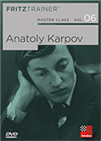 On this DVD a team of experts looks closely at the secrets of Karpov's games. In more than 7 hours of video, the authors examine four essential aspects of Karpov's superb play.
On this DVD a team of experts looks closely at the secrets of Karpov's games. In more than 7 hours of video, the authors examine four essential aspects of Karpov's superb play.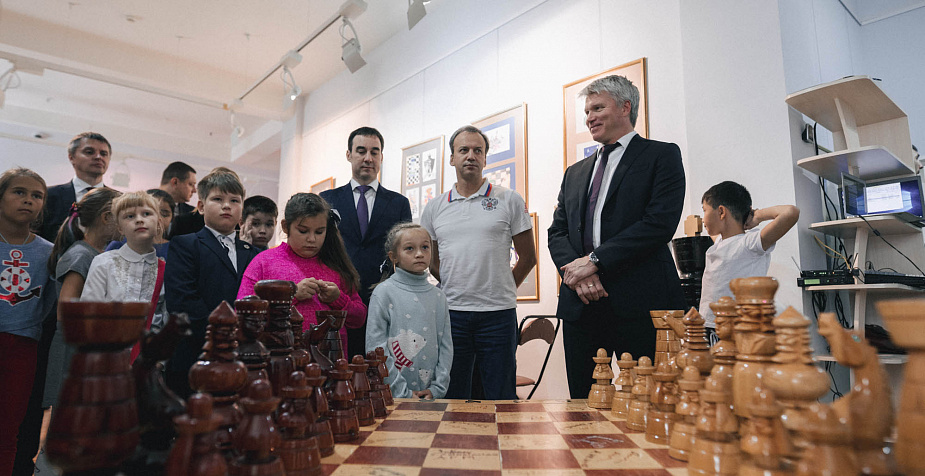
Minister of Sport of the Russian Federation Pavel Kolobkov and FIDE President Arkady Dvorkovich are the guests of honour in Khanty-Mansiysk | Photo: Official site
A tough road ahead
Two out of eight spots in next year's Candidates Tournament are already taken or nearly so. Fabiano Caruana qualified in virtue of being the loser of the previous World Championship match, while Ding Liren has a big lead in the race to get the rating spot — Anish Giri and Shakhriyar Mamedyarov are in second and third places in this category.
The remaining spots will be decided as follows: two players will get tickets through the Grand Prix, in which Mamedyarov and Alexander Grischuk are leading the overall standings; one player will qualify at a new "Grand Swiss" Tournament next month; one player will be selected by the organizers; and two players will qualify in the race to challenge Magnus Carlsen at the World Cup.
Thus, for those elite players who are not doing so well in the Grand Prix, only two chances to reach the Candidates are on offer: the World Cup and the Grand Swiss. That is the case for Anish Giri, Wesley So, Levon Aronian, Leinier Dominguez, Sergey Karjakin and Hikaru Nakamura, just to name a few — Maxime Vachier-Lagrave, Ian Nepomniachtchi, Shakhriyar Mamedyarov and Alexander Grischuk are not under quite as much pressure to reach the final in Khanty-Mansiysk, as they are the top four in the standings table of the Grand Prix.
It must be noted that doing well in these events and maintaining a high rating might go a long way towards getting the organizer's wild-card, but that can't be counted on and is therefore most likely that is not the best mindset in which to approach World Championship cycle events.
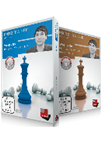 Wesley So published two new opening DVDs: 1.b3, the so called Nimzo-Larsen-Attack, for White and his black secrets in the modern Italian. Get them in a package and save money!
Wesley So published two new opening DVDs: 1.b3, the so called Nimzo-Larsen-Attack, for White and his black secrets in the modern Italian. Get them in a package and save money!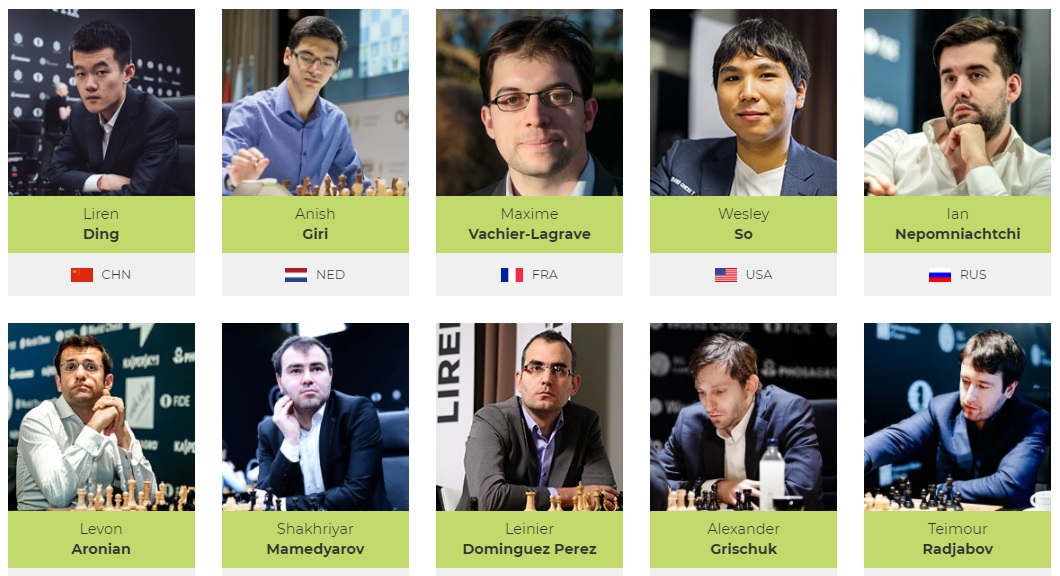
The top ten favourites by rating | Photo: Official site
Key pairings
First rounds of knock-out events see the top players facing the lowest-rated participants in the line-up, which means there is a number of match-ups in which the favourites are hardly ever upset. But that is not true for all pairings, as some encounters of round one face players of similar strength against each other.
The 'closest' match-up rating-wise will be Sergei Movsesian versus Grigoriy Oparin (both have a 2654 Elo rating). In the list of pairings presented below, the ones at the bottom are the ones that should nominally be the most hard-fought. Notice, however, how we do not need to go too far down on the list to find intriguing pairings — just to give a couple of examples, Nodirbek Abdusattorov (the youngest in the field) will face Maxim Matlakov, while Nihal Sarin (only slightly older than Abdusattorov) will play against Ibero-American champion Jorge Cori.
Top seed Ding Liren got the black pieces at the drawing of colours during the opening ceremony, which means he and all the players with odd numbers will start with Black.
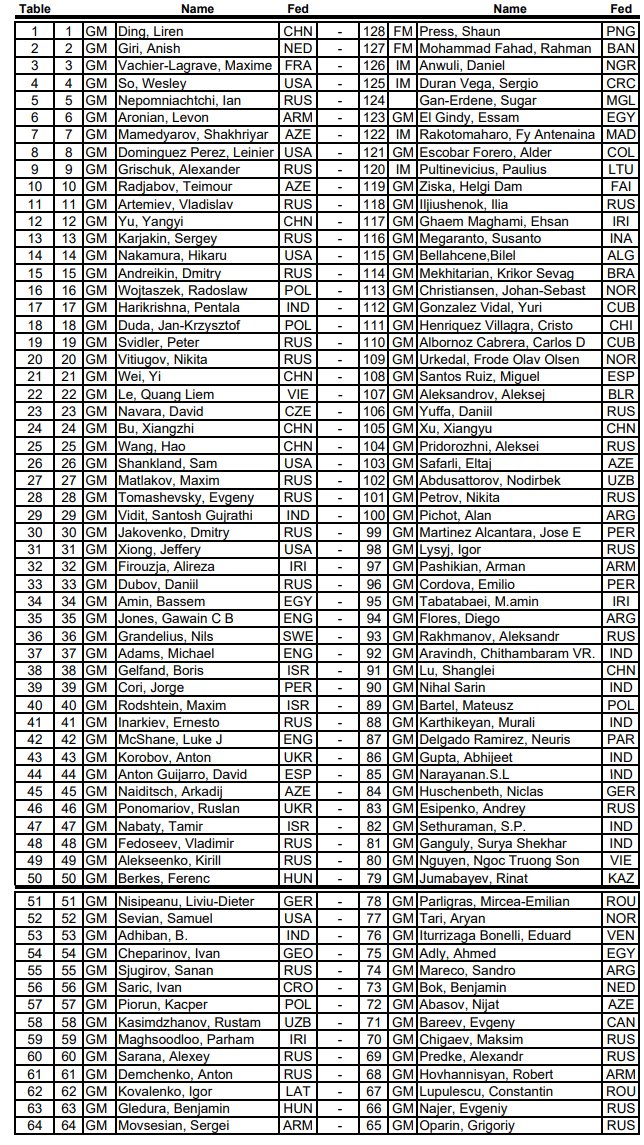
You can find the full tournament tree on the official website
Schedule
Unlike previous editions, the first rest day is scheduled after round three, instead of after round five, a suggestion repeatedly voiced by Alexander Grischuk during the first two Grand Prix events.
- Round 1: September 10th – September 12th
- Round 2: September 13th – September 15th
- Round 3: September 16th – September 18th
- Rest day: September 19th
- Round 4: September 20th – September 22nd
- Round 5: September 23rd – September 25th
- Round 6: September 26th – September 28th
- Rest day: September 29th
- Final and play-off for third place: September 30th – October 4th
Links



























